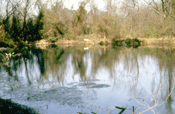
The geography of Alabama describes a state in the Southeastern United States in North America. Alabama is 30th in size and borders four U.S. states: Mississippi, Tennessee, Georgia, and Florida. It also borders the Gulf of Mexico.
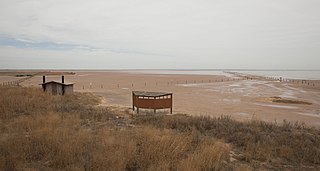
The Salt Plains National Wildlife Refuge is part of the United States system of National Wildlife Refuges. It is located in Alfalfa County in northern Oklahoma, north of Jet, along Great Salt Plains Lake, which is formed by a dam on the Salt Fork of the Arkansas River.

Attwater Prairie Chicken National Wildlife Refuge, is a federally protected refugium encompassing one of the largest remnants of coastal prairie habitat remaining in southeast Texas, United States and home to one of the last populations of the critically endangered Attwater's prairie chicken, a ground-dwelling grouse of the coastal prairie ecosystem.

The Wheeler National Wildlife Refuge is a 35,000 acre (142 km2) National Wildlife Refuge located along the Tennessee River near Decatur, Alabama. Named after Major General Joseph Wheeler, it was established to provide a habitat for wintering and migrating birds in the eastern United States.

Sauta Cave National Wildlife Refuge is a 264-acre (107 ha) National Wildlife Refuge located in northeastern Alabama, near the Sauty Creek embayment of Guntersville Lake.
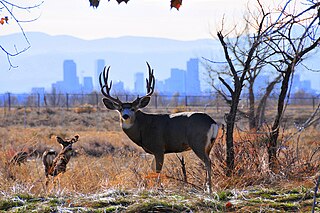
The Rocky Mountain Arsenal National Wildlife Refuge is a 15,988-acre (64.70 km2) National Wildlife Refuge located adjacent to Commerce City, Colorado, in the United States. It is approximately 8 miles (13 km) northeast of downtown Denver. The facility is on the grounds of the former Rocky Mountain Arsenal, a United States Army chemical weapons manufacturing facility. The site was designated a national wildlife refuge in 1992 by the United States Congress, and underwent a costly environmental cleanup in order to remove pollutants. The refuge is managed by the United States Fish and Wildlife Service. More than 330 species of wildlife inhabit the refuge, including raptors, deer, raccoons, coyotes, white pelicans, black-footed ferrets, black-tailed prairie dogs, and bison.

Don Edwards San Francisco Bay National Wildlife Refuge (DESFBNWR) is a United States National Wildlife Refuge located in the southern part of San Francisco Bay, California. The Refuge headquarters and visitor center is located in the Baylands district of Fremont, next to Coyote Hills Regional Park, in Alameda County. The visitor center is on Marshlands Rd, off Thornton Ave.
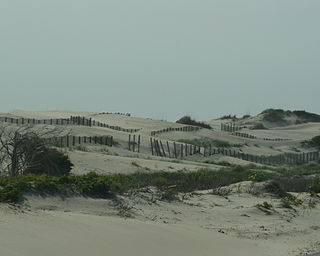
Pea Island National Wildlife Refuge is a National Wildlife Refuge located on North Carolina's Pea Island, a coastal barrier island and part of a chain of islands known as the Outer Banks, adjacent to Cape Hatteras National Seashore. The sanctuary is located 10 miles (16 km) south of Nags Head, North Carolina on NC 12.

Bon Secour National Wildlife Refuge is a 7,157-acre (29 km2) National Wildlife Refuge located in five separate units in Baldwin and Mobile Counties, United States, directly west of Gulf Shores, Alabama on the Fort Morgan Peninsula. The refuge serves as a resting and feeding area for migratory birds and as a sanctuary for native flora and fauna. The refuge is one of the largest undeveloped parcels of land on the Alabama coast.

Eufaula National Wildlife Refuge is an 11,184 acre (45.26 km2) National Wildlife Refuge located in Barbour and Russell counties in Alabama and Stewart and Quitman counties in Georgia. Eufaula NWR is located on the Walter F. George Lake along the Chattahoochee River between Alabama and Georgia. Of the 11,184 acres (45.26 km2) of managed property, 7,953 acres (32.18 km2) are in Alabama and 3,231 acres (13.08 km2) are in Georgia.

Key Cave National Wildlife Refuge is a 1,060 acre (4.3 km2) National Wildlife Refuge located in northwestern Alabama, along the Tennessee River downstream from Florence, Alabama. Additional purchases are under negotiation which will increase the size of the refuge to 1,800 acres (7.3 km2).
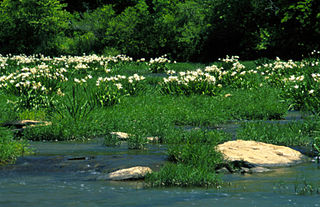
The Cahaba River National Wildlife Refuge is a 3,689.63 acres (15 km2) National Wildlife Refuge located in central Alabama, along the Cahaba River downstream from Birmingham, Alabama. The refuge was established on September 25, 2002. Additional purchases were approved that will potentially increase the size of the refuge to 7,300 acres (29.5 km²). Additional negotiations propose an expansion to a potential 280,000 acres (1,100 km2), most of which currently belongs to private landowners. The facility is unstaffed, but is administered by the Mountain Longleaf National Wildlife Refuge in Anniston, Alabama.

Fern Cave National Wildlife Refuge is a 199-acre (0.8 km2) National Wildlife Refuge located in northeastern Alabama, near Paint Rock, Alabama in Jackson County.

Mountain Longleaf National Wildlife Refuge is a 9,016-acre (36 km2) National Wildlife Refuge located in eastern Alabama, near Anniston, Alabama on the former site of Fort McClellan. It takes its name from some of the last remaining mountain longleaf pine forests in the southeastern United States.

The Yazoo National Wildlife Refuge is a 12,941 acre (52.4 km2) National Wildlife Refuge located in Washington County, Mississippi. Named after the Yazoo tribe, it was established to provide waterfowl and other migratory birds in the Mississippi Flyway with nesting, feeding, brooding, and resting habitat.

The Tualatin River National Wildlife Refuge is a 1,856 acres (751 ha) wetlands and lowlands sanctuary in the northwestern part of the U.S. state of Oregon. Established in 1992 and opened to the public in 2006, it is managed by the United States Fish and Wildlife Service. Located in southeastern Washington County, 15 miles (24 km) southwest of Portland, the refuge is bordered by Sherwood, Tualatin and Tigard. A newer area, extending into northern Yamhill County, is located further west near the city of Gaston surrounding the former Wapato Lake.

The Seal Beach National Wildlife Refuge is a wildlife refuge encompassing 965 acres (3.91 km2) located in the California coastal community of Seal Beach. Although it is located in Orange County it is included as part of the San Diego National Wildlife Refuge Complex. It was established in 1972.
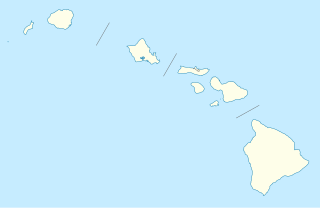
Kakahaiʻa National Wildlife Refuge (NWR) was established in 1977 to permanently protect wetland habitat for endangered endemic waterbirds and wintering migratory wetland birds and to maintain the structural integrity of an ancient Hawaiian fishpond.

The Mississippi Sandhill Crane National Wildlife Refuge was established in 1975 to safeguard the endangered Mississippi sandhill crane and its unique disappearing wet pine savanna habitat. The refuge consists of more than 19,000 acres (77 km2) in four units and is now part of the Gulf Coast National Wildlife Refuge Complex. The Refuge Complex Manager also administers Grand Bay National Wildlife Refuge (Mississippi/Alabama) and Bon Secour National Wildlife Refuge (Alabama).



